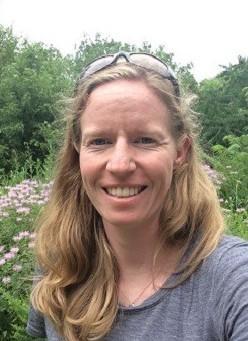Study finds street activity and greenspace usage are negatively associated with crime
Researchers use cell phone trace data to support green infrastructure in reducing criminal activity
By Sarah Steimer
Public greenspaces are commonly linked to crime rates — either positively or negatively — but are often viewed through their basic existence. A new study by University of Chicago researchers takes the microscope closer, using cell phone trace data to explore how human mobility in and around these spaces is associated with crime.
Using spatial models, the team found that park visits and local street activity were negatively associated with crime, while controlling for socio-demographic factors, such as income and education. The findings, published in NPJ Urban Sustainability, also support the idea that much of our behavior is determined by environmental factors — not just by individual choices.
“We thought it was important to investigate realized access to parks — that is, actual park use,” says lead researcher Kathryn Schertz, a doctoral student in Psychology. “Accounting for differences in experiential engagement seemed critical in determining the efficacy of urban greenspace.”
The study built on existing research that pointed to both sociological and psychological mechanisms relating greenspace with crime. One potential sociological mechanism is built on the theory of crime prevention through environmental design: Greenspaces encourage neighbors to interact with one another and spend time outdoors, which in turn increases “eyes on the street” that help prevent criminal behavior. Psychologically, greenspaces are associated with improvements in mood and cognitive functioning, which can reduce human aggression.
For their study — which focused on Chicago and New York City — the team defined local street activity as the share of locations recorded from each cell phone within their local neighborhood, but outside their home. Park visits were defined as recorded locations within park spaces, as labeled on OpenStreetMaps. These data were then averaged for all sampled residents of a census tract.
“Census tracts in Hyde Park, for instance, tended to have high local street activity since many residents stay within the neighborhood to work or study at the university,” Schertz explains. “Other neighborhoods, where residents travel further to work or to conduct errands and other activities, had lower local street activity.”
The team teased apart the effects of park visits versus local street activity. Some theories suggest parks protect against crime by increasing local street activity, but using cell phone tracing park visits and local street activity could be examined separately, which allowed the researchers to explore the independent effects of these factors as they relate to crime. The results suggested multiple pathways for the influence of local street activity and greenspace on crime.
The study’s findings were also supported by the use of exploratory directed acyclic graph models. Such models find direct and indirect relationships between variables in observational data, allowing researchers to identify causal relationships from correlational data.
“This was a new methodology for us, so it was an exploratory analysis, as opposed to confirmatory,” Schertz says. “We found direct, or causal, paths between both park visits and street activity with crime but the direction of these effects couldn’t be determined.”
The work and methods have also motivated the team to begin work on a project that uses longitudinal data to determine the relationship of these variables over time to make stronger causal claims.
The study’s results suggest green infrastructure, among its many benefits, could also be a cost-effective way to reduce crime. But, Schertz notes, for these spaces to effectively reduce criminal activity, cities need to understand the elements that influence how — and how often — neighbors will engage with the space.
“Equitable access to greenspace should be viewed as a necessity for sustainable and inclusive cities,” she says.
 THE UNIVERSITY OF CHICAGO
THE UNIVERSITY OF CHICAGO


